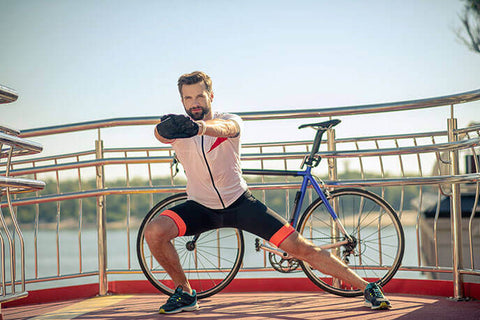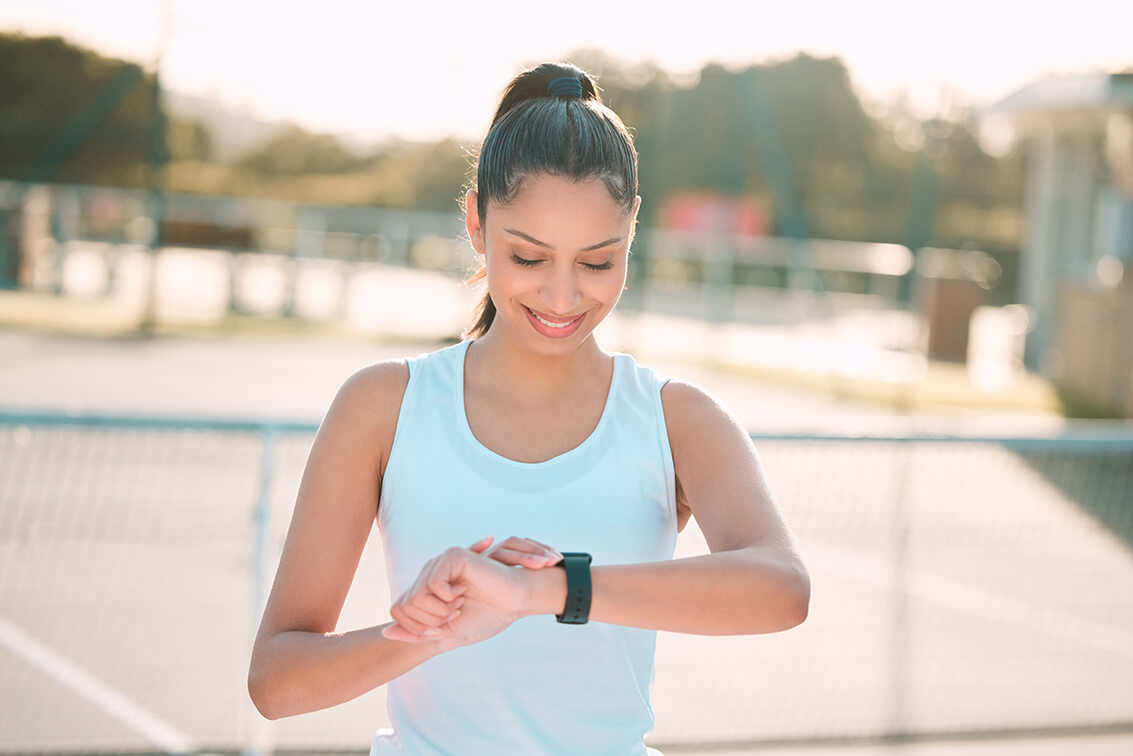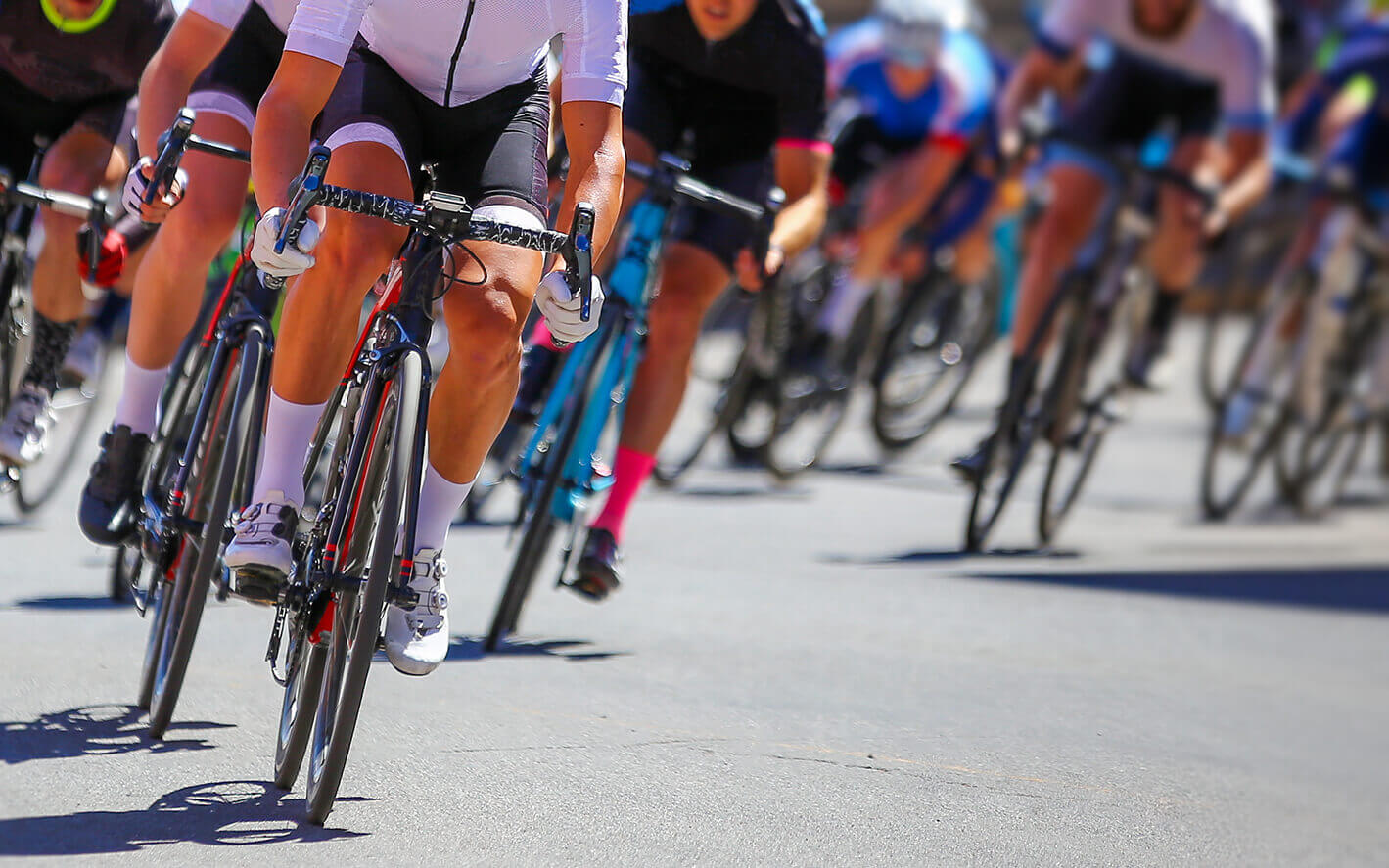Looking to stay active but pressed for time? This piece unveils top methods to infuse your day with movement, whether at home, work, or in-between. Get ready to unlock practical ways to maintain an active lifestyle without major disruptions to your routine.
Key Takeaways
- Mix up your exercise routine with aerobic activities, strength training, and flexibility and balance exercises to engage all muscle groups, keep fitness fun, and boost overall health.
- Turn everyday activities like household chores and work desk routines into opportunities for physical activity to stay active throughout the day and break sedentary habits.
- Set realistic fitness goals using strategies like the SMART framework, track your progress, and remember to include self-care and recovery for sustainable physical activity and improved performance.
Embrace a Balanced Exercise Routine

For optimum health benefits, health experts suggest a diversified exercise routine combining different types of workouts. You might be thinking, “But isn’t exercise just about sweating in the gym?” Not at all! A balanced exercise routine goes beyond the gym and includes aerobic activities, strength training, and flexibility and balance exercises. Having a balance between different exercises not only ensures that all your muscle groups get a workout, but it also keeps your fitness routine interesting, helping you maintain motivation.
While aerobic activities boost cardiorespiratory fitness, strength training contributes to overall health and physical fitness. Conversely, flexibility and balance exercises advance your body’s range of motion, stability, and coordination. It’s like a symphony where every instrument plays a distinct yet harmonious role. And the best part? You can start slowly and choose activities that you enjoy, enhancing your chances of sticking to your physical activity program.
Aerobic activities
Aerobic activities, often referred to as cardio, are exercises that get your heart pumping and your blood flowing. These include activities like walking fast, jogging, or dancing. But how can you tell if you’re doing a moderate-intensity aerobic activity? Here’s a simple trick: try the ‘talk test’. If you can speak a few words but can’t sing while doing an activity, you’re likely engaging in moderate intensity exercise.
Aerobic activities have immense health benefits. They improve cardiorespiratory fitness, which is beneficial for heart health. Regular aerobic activity can help lower your risk of chronic diseases and improve your overall health. It is recommended to engage in at least 300 minutes per week of moderate-intensity aerobic activity.
So, why not turn up your favorite music and have a little dance party in your living room?
Strength training
Strength training focuses on building muscular strength and endurance, and it’s an integral part of a balanced exercise routine. This type of training enhances overall health, boosts metabolism, and improves athletic performance. It’s like giving your body the power to perform movements without getting fatigued quickly.
You can incorporate muscle strengthening activities, such as strength training, into your routine by using a variety of equipment and exercises, including:
- weight machines
- free weights
- resistance bands
- everyday activities like carrying groceries or climbing stairs
Strength training also contributes to maintaining a healthy body weight by helping you lose weight, burning calories, and improving body composition.
So, the next time you’re doing some heavy lifting, remember - you’re not just getting work done, you’re also building a stronger you!
Flexibility and balance exercises

Have you ever marveled at a dancer’s fluid movements or a gymnast’s stability? That’s the magic of flexibility and balance exercises. These exercises improve the range of motion of muscles and joints, reduce the risk of activity-based injuries, and improve functional range of motion.
Practices such as yoga and Pilates not only build strength but also improve posture, flexibility, and work on balance. Balance exercises are especially crucial for older adults, helping them maintain independence and reducing the risk of falls by improving stability and coordination.
So, whether it’s trying out a yoga class or incorporating practice standing on one foot while brushing your teeth, remember each little effort counts towards enhanced flexibility and balance.
Utilize Household Chores as Workouts
Did you know that household chores can double up as workouts? Yes, you read that right! Transform household chores into physical activities by incorporating squats, lifting, and reaching movements during tasks like laundry, cleaning, or yard work. So, the next time you’re doing household chores, don’t just think of it as a mundane task. Instead, see it as an opportunity to get in some physical activity.
When consciously engaging muscle groups and increasing movement intensity, tasks like vacuuming, sweeping, or mopping floors, window cleaning, and painting can become effective workouts. And the best part? Household chores such as hand washing a car, gardening, cleaning the garage, and ironing can burn significant calories, similar to organized fitness activities. So, why not turn your chores into a fun, calorie-burning session?
Incorporate Movement into Your Workday
Many of us spend hours sitting at our desks, leading a sedentary work life. However, who claims that movement can’t be incorporated into your workday? Transform your workstation into an active one! Here are some ideas:
-
Use a treadmill desk or a mini exercise bike under the desk
-
Opt for a stand-up desk to engage your core and improve your posture
-
Replace your chair with an exercise ball for better muscle engagement
Make physical activity a collective part of work by introducing walking meetings, encouraging movement during phone calls, and making use of workplace facilities or programs for exercise. Set regular alarms or use apps to remind yourself to take breaks for movement during the workday, like standing, stretching, or walking to break up long periods of sitting. Remember, every step counts towards a more active you and following the physical activity guidelines!
Choose Enjoyable Activities

Selecting activities that you personally enjoy gives you control over your fitness journey, which is vital for maintaining physical activity. Some activities that you can consider include:
- Listening to upbeat music
- Dancing
- Playing a sport
- Going for a hike
- Taking a dance class
Engaging in these fun activities can boost motivation for exercise, creating a pleasurable experience.
Exploring a variety of activities, joining classes or clubs, and selecting simple exercises like walking or jogging helps maintain interest and cater to different skill levels. So, whether it’s hiking in the great outdoors, dancing to your favorite tunes, or practicing yoga, choose activities that bring you joy and make your heart sing!
Make Physical Activity a Social Affair

Exercising isn’t necessarily a solitary endeavor. In fact, making physical activity a social affair can make it even more enjoyable and motivating. Engaging in physical activity with others can boost motivation by:
- Facilitating a shared and enjoyable experience
- Providing accountability and support
- Adding a social element to your workout routine
- Making exercise more fun and enjoyable
So grab a friend, family member, or colleague and get moving together!
Consider the following ways to stay active with friends:
- Schedule regular exercise sessions together
- Take active vacations such as walking or bike tours with friends or family
- Join or form teams to participate in recreational sports leagues
- Set communal goals like participating in a charity walk
- Celebrate fitness milestones together
These activities, often held at a community center, can offer additional motivation and camaraderie for staying active.
So, why not invite a friend for a jog or organize a family bike ride this weekend?
Optimize Your Environment for Physical Activity
The environment significantly influences your fitness journey. A home gym with durable materials and good lighting can make the space more inviting and motivate workouts. Even small spaces can be transformed into an effective home gym with strategic design elements.
Outdoor fitness areas can reduce depression and anxiety, making physical activity more enjoyable. Outdoor gyms can provide non-electric cardio and strength training equipment, offering a well-rounded workout experience. So, make the most of your surroundings, and let them inspire and motivate you to stay active!
Set Realistic Goals and Track Progress
On your journey to an active lifestyle, it’s vital to set achievable goals. The SMART goal-setting strategy, standing for Specific, Measurable, Achievable, Realistic, and Timely, is an effective way to establish fitness goals. Achievable goals set the foundation for motivation and commitment, while gradually elevating these targets fosters a sense of progress and accomplishment.
Tracking progress can be done using:
- Fitness journals
- Digital apps
- Taking progress pictures
- Noting changes in the fit of your clothes or your performance improvements
If you are using digital apps on your phone, be sure to keep your phone charged with a phone charging case. The StrideCharge wireless charging case and mount will allow you wirelessly charge your phone anytime, anywhere. The StrideCharge Mount will allow you to attach your phone to your bikes handlebars, so you can keep your phone within view on your rides.
Remember, the journey to fitness is a marathon, not a sprint. So, set achievable goals, celebrate your progress, and keep moving forward!
Overcome Common Barriers to Physical Activity
Many of us, including those with physical disabilities, encounter common challenges when it comes to physical activity, such as:
- Time constraints
- Childcare responsibilities
- Economic barriers
- Climatic barriers
But guess what? There’s always a way around these barriers. Incorporating physical activity into a busy schedule can be facilitated by time management and prioritization strategies.
Overcoming the challenge of finding childcare can be done by being active with children, finding child care at recreation centers, or arranging for a friend or family member to supervise the child. Economic and climatic barriers to physical activity can be mitigated by choosing low-cost exercises that require minimal equipment and by selecting indoor activities that remain unaffected by the weather. Remember, every small step towards an active lifestyle counts!
Prioritize Self-Care and Recovery

While pursuing an active lifestyle, don’t overlook the importance of self-care and recovery. Adequate sleep is crucial for athletic performance and recovery, as lack of sleep can lead to decreased endurance performance.
Nutrition plays a critical role in recovery and performance, with emphasis on individualized dietary strategies that incorporate carbohydrates and proteins after exercise. So, while you’re working hard at staying active, don’t forget to give your body the rest and nutrition it needs to recover and perform better.
Seek Professional Guidance if Needed
Maintaining a physically active lifestyle is as crucial as ensuring the exercise regimen you follow is safe and effective, particularly for healthy adults with chronic diseases or those focused on disease control and health and human services.
Customized exercise programs can be designed for individuals with conditions such as:
- heart disease
- diabetes
- arthritis
- asthma
- back pain
- osteoporosis
These programs can help manage symptoms effectively and improve the quality of life. So, if you have any health conditions or if you experience unusual discomfort or fatigue during exercise, don’t hesitate to seek advice from healthcare providers.
Summary
We’ve embarked on an exciting journey, exploring various ways to stay active in everyday life. From embracing a balanced exercise routine, making household chores a workout session, incorporating movement into your workday, to overcoming common barriers to physical activity - we’ve covered it all. Remember, staying active is not just about hitting the gym; it’s about making small changes to your daily routine, choosing enjoyable activities, and most importantly, listening to your body. So, let’s step into a healthier, more active lifestyle - because every step counts!
Frequently Asked Questions
What does stay active mean?
Stay active means engaging in any type of physical activity that gets your body moving, such as brisk walking, riding a bike, or running, to keep your heart healthy and your body fit. So, make sure to incorporate these activities into your daily routine for a healthier lifestyle.
How do you stay active?
To stay active, try to move more throughout the day, aim for 150 to 300 minutes of moderate-intensity aerobic exercise per week, and incorporate muscle-strengthening exercises at least 2 days a week. Remember, greater health benefits can be achieved with more than 300 minutes of exercise per week.
Why is it important to stay active?
Staying active is crucial for maintaining good health, as it can reduce the risk of diseases, improve brain health, manage weight, and enhance your overall quality of life. Regular physical activity offers immediate and long-term health benefits, making it essential for a healthy lifestyle.
How can I incorporate a balanced exercise routine into my life?
Incorporate moderate-intensity aerobic activities, strength training, and flexibility exercises such as yoga or Pilates into your routine to achieve a balanced exercise regimen. This will ensure overall fitness and well-being.
Can household chores count as physical activity?
Yes, household chores can definitely count as physical activity by incorporating movements like squats, lifting, and reaching while doing tasks like laundry, cleaning, or yard work. So, get moving and turn your chores into a workout!




Leave a comment
This site is protected by hCaptcha and the hCaptcha Privacy Policy and Terms of Service apply.